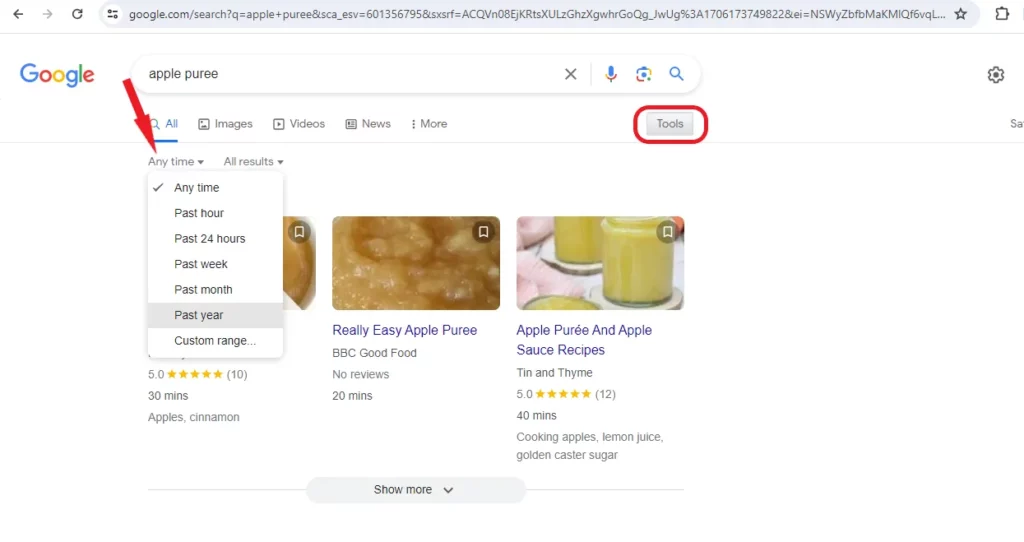Strong research skills are a must-have skill for academic success. Why are research skills important?
They’re essential for academic success. You need them for all term papers, research reports, and assignments. These skills also help to deepen your understanding of all the topics in your curriculum.
By design, research questions are not answerable by simple Google searches. They require planning, hypothesis evaluation, data or information analysis, critical thinking, information synthesis, logical and well-thought-out presentation, and more.
With these skills, you can produce credible, logical, accurate, and plagiarism-free research efficiently and promptly.
Moreover, being a skilled researcher is not only necessary for academic success. It is a lifelong competency that would remain helpful in your future career and personal life.
Some tips you can adopt to improve your research skills include understanding the research process, using library resources, effectively searching the internet, adopting proper citation and referencing, developing your analytical skills, managing time efficiently, utilising academic support services, enhancing your note-taking capabilities, using primary sources only, and avoiding confirmation bias.
Below, we examine these strategies to help you improve your research skills.
1. Always Create a Research Strategy Document
Think of strategy as a roadmap highlighting how you want to attack the research problem. We believe creating a strategy before diving knee-deep into research provides clarity and saves you time.
Some of the constituents of the strategy document include:
- Research goals
- Research deadline
- Rewriting the research problem the way you understand it, in your own words and simple terms. Then, translate the research problem into a research question. “HR managers are struggling to attract and keep top talent with top talent spending an average of 6 months in each role” is an example of a research problem, while “What strategies and techniques can HR managers adopt to better attract and retain top talents?” is an example of a research question.
- Outline the major outcomes the research must fulfil. For example, “The research must provide a nexus between company actions and top talent loyalty, in addition to providing actionable tips for HR managers.”
- Identify the type of research you’re doing. There are three categories of research: basic vs applied, exploratory vs explanatory, and inductive vs deductive research.
- Findings from preliminary research. We recommend quick preliminary research to see the resources, including scholarly knowledge, readily available in the public domain. This step can help identify a new angle to pursue your research from or drop if you reckon other researchers and authors have adequately dealt with the question, preventing you from wasting time and resources on research that adds no additional value to the body of existing knowledge.
2. Understand the Research Process
The research process consists of six major stages, including topic selection, literature evaluation, refining the research topic, relevant information gathering (could also include sampling and recruitment, depending on the topic or research focus), data analysis, and knitting everything together.
Topic Selection
Sometimes, your tutor may provide the research topic. However, you’ll likely need to work with your supervisor to choose a topic for your thesis and undergrad projects.
For your choice of research topic, it’s imperative to think of your current interests and future ambitions.
Beyond top grades, your undergrad research may serve as evidence of your interest in a particular area and be helpful for future academic and career progression.
Every research topic or question starts from a broad problem statement, which you can then fine-tune after exploring the existing body of knowledge in that field.
Overall, a great topic has the following characteristics:
- Focused on a single issue. However, you may subdivide the issue into several interconnected but related problem statements.
- Researchable with credible sources. For example, requiring proprietary data that is not readily available may seriously hamper your success.
- Feasible and specific. Additionally, ensure that you have adequate time and resources to complete the study before the due date.
- Avoids value judgement questions like “Is vitamin D better than magnesium in treating bone issues?”
- Not close-ended such that the answer is a simple yes or no. The lack of clear answers provides room for robust investigation and is where your arguments shine.
- The answer to your question should not be readily available. It must require rigorous work and iterative problem-solving to complete.
- The topic must be original and address a relevant industry or niche problem. Originality doesn’t mean other researchers haven’t attempted something similar but that you’re presenting a new angle.
Literature Review
The goals of conducting the literature review include:
- To ensure other researchers haven’t answered the research question before and that the study will contribute significant value to the existing body of knowledge.
- To identify gaps in existing works and determine how your project will fill that gap. In essence, the research must considerably add to existing knowledge or improve on earlier methodologies. Without meeting these standards, most research journals will not accept your work.
- The third goal is to help you evaluate the research methods, research design, data sources, and key concepts other researchers adopted for their work.
A literature review is a lot of work and requires scouring through numerous academic journals, books, and online publications.
You can leverage AI tools like Elicit AI, Research Rabbit, Semantic Scholar, and Connected Papers to find papers, summarise studies, conduct citation-based mapping, find similar research papers, and more.
Refine Research Topic
Armed with more information, context, potential data sources, availability of reliable and credible data, and the scope of work required from your literature review, you often need to refine your topic.
For example, your research question may be too narrow if you find very few credible papers and books on the subject. Your research topic could also be suffering from being too broad.
You can finetune a broad project topic by asking the why, what, who, where, and when questions.
Which group of people are you targeting for the research? What geographic location would the study be limited to? Why do you think the research is relevant? What period would you limit the research to?
For example, “What will be the impact of climate change in the United Kingdom?” is quite broad. What kind of impact are we talking about? Economic? Migration? Health?
A more specific variant of the question would be: “How will climate change affect net migration between the UK coastline and major cities in the next 20 years?”
Data Gathering
Collecting data is the heart of the research process. This step allows you to gather variables essential for reaching conclusions. Depending on your research question, these variables can either be qualitative (non-numerical) or quantitative (numerical).
You may gather data through one or more of the following methods:
Surveys
Surveys are a series of questions used to extract specific data from a sample of the target population. When running surveys, you should take note of the following:
- Sample size: Ensure the number of participants adequately represents the population.
- Bias: Ensure the questions do not tilt respondents in a particular direction or the sampling is not based on subjective measures. For example, assuming the age of shoppers who walk into a store can lead to bias.
- Ambiguity and clarity: Avoid ambiguous questions that are prone to personal interpretation. “Do you drink plenty of alcohol during the week?” is subjective because the answer depends on who you ask.
- Resource management: The larger the sample size, the more expensive and time-consuming the survey process is.
Experiments
Experiments will be your go-to research method if you’re in any natural and physical sciences programme. It’s easier to establish a cause-and-effect relationship with experiments than with surveys.
A typical example of an experiment involves splitting test subjects into a control and an experimental group. The researchers then give the latter group a medicine, drug, or treatment or subject them to changes.
The researchers then evaluate the two groups for a specific variable. If the variable varies significantly, then suffice it to say that the changes made to the experimental group are responsible for the significant differences in the observed variable.
Observational Studies
Observational studies are more popular in social sciences for obvious reasons. They involve going to the field to observe the attitudes and behaviours of a specific group in the natural habitat.
Observational studies may either be participant observation or nonparticipant observation. The former involves the researcher staying in the same habit as the group they’re observing, while the latter is the reverse.
Participant observation may influence how the target population acts. So, it’s imperative to conduct the study such that your presence is not disruptive to the data collection process.
Existing Data
In every sector or industry, there’s existing data that can help with your research. Need economic activity data on the UK? The Office for National Statistics (ONS) is perhaps the most credible primary source on the subject matter.
What about data on the UK environment? The Department for Environment, Food & Rural Affairs data services platform (DSP) is your best bet.
Beyond facts and figures, court records, medical records (without personally identifiable information), and police interview tapes can also be excellent sources of information.
Data Analysis
You have gathered all the data you need to answer your research question. Now, this is where you begin to look for clues, determine relationships between variables, establish trends, find patterns, and more.
For numerical variables, you’ll need complex statistical techniques to extract insights from the data. Tools like Statistical Analysis System (SAS), R, Python, MS Excel, and the Statistical Package for the Social Sciences (SPSS) can help with quantitative data analysis.
Some tools can help with most qualitative methodological techniques. Examples of these tools include nVivo and ATLAS.ti. It’s imperative to note that while these tools are helpful, you’ll need to put on your sound critical thinking cap to ensure your analysis is accurate.
Result Discussion
The data analysis above will provide evidence to prove or disprove your hypothesis or question. The discussion section helps you convey these results in a deeper conversation.
What results do you have? What are the implications of such results? How relevant are the results from both a statistical point of view and practical applications?
These and many more questions are the answers this section should provide. Furthermore, share the limitations of your research and potential avenues for further exploration.
If there’s any additional tip we would leave you with here is to stay with the facts and provide your findings in context with previous studies. Doing this strengthens your argument and makes your research more credible and citable.
3. Use Library Resources

Librarians curate only authoritative and credible sources. These sources include books, journals, and databases.
Another benefit of using library resources is that they are organised, making it easy for you to find the resources you need.
As a college student, you should never pay out of pocket for any resource. Your school library probably already provides access to that resource. If not, you can make a request, and it’ll most likely be granted.
So, what kind of resources are available?
- A searchable library catalogue tool, basically a search engine for academic sources
- Access to third-party databases
- Extensive collection of e-books
- Access to conference papers, newspaper articles, and other credible publications
- Subject Librarian to help you with resources not in the library catalogue
- Reference management tools and resources on how to use them
Tips to Search Databases
- Use the truncation symbol (*) and the wildcard symbol (?) to broaden your search to ensure you do not miss out on relevant results due to spelling or plural versions. For example, “agricultur*” will provide search results that include the following words: agriculture, agricultural, and agriculturalist. “Lab?r” will search for resources with both “labor” and “labour” in them.
- Use boolean operators. We discuss this extensively below. The same principles apply here.
- Use inverted commas to search for a specific phrase together. We also explain this below.
- Leverage proximity search: This tells the database to return results that have words within certain distances from each other. For example, typing “labour same union” on Web of Science returns publications with “labour” and “union” in the same sentence. Typing “labour union ~4” on JSTOR retrieves records where “labour” and “union” are only separated by four words.
- Combine the methods above to create more sophisticated search queries.
Join the Immerse Education 2025 Essay Competition
Follow the instructions to write and submit your best essay for a chance to be awarded a 100% scholarship.

4. Effective Internet Research
The internet is a treasure trove of information and resources. That said, you must be cautious of every page on the internet, especially in the age of AI content.
Every source for a research project must be up-to-date, factual, unbiased, and from a credible source. True story: we’ve seen students quote data from satirical publications.
Moreover, most pages on the internet don’t go through a review process and may be rife with misinformation.
Just because a page appears on number one of your search results doesn’t make it a great resource. The article author or publisher may just be great at search engine optimization.
Assessing a Website’s Credibility and Accuracy
Many people create websites to make money. While some provide some measure of value, others simply do not care.
Moreover, some of these websites may present information from the owner or author’s bias. For the most part, it’s best to stick with non-academic resources provided by government agencies and reputable organisations.
You can evaluate a website’s credibility by examining:
- The About Us page: Who or which group owns the website? What are their goals?
- The author bio: Who’s the author, and what’s their qualification and experience to authoritatively speak on the subject? You may do further Google and social media (LinkedIn in particular) investigations to assess the author’s qualifications.
- Domain ownership: Use whois.net to track who owns a website. This information may or may not be available.
- Articles dates and recency: Avoid undated websites and articles using dated facts to draw recent conclusions.
Internet Search Techniques
Here are a few techniques to help you find relevant pages that answer your search queries.
Use Inverted Commas
Search engines will treat each word in your search query as individual keywords without inverted commas.
So, you may get web pages that only contain the term “anatomy” or only “heart” if you type heart anatomy without quotation marks.
However, encasing your keyword in quotation marks, like this: “heart anatomy” only returns results with the exact phrase, thus providing fewer web pages to examine.
Boolean Operators
Boolean operators include AND, OR, and NOT. They can be a powerful way to hone in on the sources you need.
Boolean Operators
Use
Example
AND
Search result includes web pages containing keywords joined by AND
“Traffic data” AND “London”
OR
Search result includes pages with one or all the keywords linked by OR
“Manager” OR “Coordinator”
NOT or –
Excludes web pages with a particular term from the search result. Helpful when a term skews your search results
-animal or “NOT animal”
+
Used to include a term that must be included in the results. Helpful for narrowing a broad search query
2024 United Kingdom Elections report +fraud +voting pattern
Brackets ()
Powerful for combining boolean operators. Helpful when a keyword also has a popular synonyms or alternative
Project (manager OR coordinator)
Site:
Provide search results from the website you provide only. Helpful when searching a website like the ONS for data
Search Engine Tools

Search engines have additional tools to help you refine your search. Google, for example, has tools to limit the results to those published within a specified date range.
You may also limit results to a particular file type, such as images, books, videos, and news.
Use Different Search Engines
Each search engine has its own unique algorithms (set of rules to arrange web pages in search results). Trying a new search engine may just be the trick you need.
Examples of other search engines to try include:
Use Google’s Advanced Search Tool

Google’s advanced search tool allows you to enter multiple parameters to refine your search. Behind the hood, the tool simplifies the use of boolean operators. Instead of typing boolean operators, you simply enter terms in textboxes.
You can specify other parameters like the last time the authors updated the website, region to target, and language.
5. Citation and referencing
Any idea, words, data, images, infographic, or information you take from any source requires a reference. Without citations, you’re practically stealing someone else’s ideas and thoughts.
Many schools have strict rules against plagiarism, including formal warnings, suspension, admission withdrawal, and other penalties.
Aside from helping you avoid plagiarism, citations also make your work more authoritative and persuasive.
There are multiple referencing styles, including AMS (American Meteorological Society), APA (American Psychological Association), Chicago, Harvard, MHRA (Modern Humanities Research Association), OSCOLA (Oxford Standard for the Citation of Legal Authorities), and others.
Your student handbook will usually provide which of the above styles your programme uses.
Tips For Managing Citations and References
- Make a list of your references and cite them as you write.
- Add notes to each reference, highlighting the sections, paragraphs, and pages you’re most interested in.
- Be consistent with the reference style you use.
- Familiarise yourself with the project’s reference style.
- Use referencing tools. Examples include EndNote, Zotero or Mendeley. Practice with the program to ensure you know the type of information required and where to input it.
6. Develop Analytical Skills
Per the Rockwell Career Centre, “analytical skills are problem-solving skills that help you parse data and information to develop creative, rational solutions.”
Analytical skills are essential to every step of the research process, especially in objectively analysing the problem and the result of your experiments.
Analytical skills require critical reasoning, understanding different concepts (including complex and abstract ones), explaining or articulating your thoughts, applying what you read to tackle problems, and much more.
Strategies for analysing and synthesising information
1. Gain Foundational Knowledge
Nothing strengthens your ability to critically analyse the data you’ve gathered than having a solid grasp of the basic concepts in the area you’re investigating.
For example, you can’t discuss recidivism without understanding the court and prison process.
2. Create an information matrix
An information matrix is a table that helps organise your sources by major themes. Identifying key ideas from sources is an integral part of information synthesis.
Here’s an example with five sources:
Theme
Source 1
Source 2
Source 3
Source 4
Source 5
Quality time
Words of affirmation
Gifting
Acts of service
Physical touch
For each source, enter what they say about each major theme you identified. Leave the corresponding cell blank if a source is mute on a theme.
Create a new row if any of the sources present a compelling key theme that aligns with your research.
3. Summarise and Paraphrase the Original Source
Summarise and paraphrase important ideas and quotations you lift from sources. This primarily means presenting your original thoughts and interpretation of the content in the source.
To paraphrase, you must understand the original source. So, this is good practice for information synthesis. If you’re struggling to paraphrase or summarise an idea, maybe you do not understand it yet.
Doing this keeps quotes to a minimum, which can help you achieve better grades. Additionally, it promotes the use of your own voice more and to avoid plagiarism.
4. Improve your comprehension skills
Some of the ways you can improve your comprehension skills include:
- Broadening your vocabulary often by reading widely and critically
- Recollecting the main points and critical details about the text from memory
- Reading in a distraction-free environment
- Slow down and embrace active reading. The Open University defines active reading as “reading something with a determination to understand and evaluate it for its relevance to your needs.” This process involves highlighting key texts, raising questions, explaining the text to others, self-testing with flashcards or help from a colleague, and more.
- Summarising and identifying key ideas
5. Identify the Context of Each Source
While two papers may speak about the same topic, they may approach the subject from totally opposite angles. This makes it hard to do an apples-to-apples comparison. Identifying the context helps you avoid this pitfall.
7. Time Management in Research
Strategies and tips for effecting time management in research include:
1. Setting Realistic and Attainable Goals
Earlier, we mentioned how it’s imperative to choose a research topic that you can complete within the deadline provided by your tutor. Doing otherwise will only lead to poor time management. While you may complete the research, other areas may suffer.
2. Fix Regular Schedule
Creating a schedule helps you devote ample time to the research daily. Consistent attention is better than last-minute rushes. A regular schedule helps avoid procrastination, interruptions, and lack of discipline.
How many hours you commit daily will depend on your other commitments and the research deadline. It’s important to design your schedule such that you’ve completed your research report far ahead of the deadline.
3. Incorporate Task Lists for Each Block of Time
Approach each block of time you schedule with a task list. Doing so helps you focus and prioritise important tasks.
4. Avoid Multitasking
Focus on one task at a time and finish the same before doing something else. Multitasking is often unproductive and can be a source of stress when you fail to achieve anything noteworthy.
5. Leverage Technology
Tools for project management, to-do lists, and calendar apps can help you implement the time management strategies shared above and help you stay organised.
6. Ask For Help
Ask for help from your tutor, coursemates, and librarian whenever you’re stuck. Also, use the numerous free resources available to you.
7. Take Breaks and Reward Yourself
Bake breaks into your schedule to alleviate stress and ensure you operate optimally. Additionally, reward yourself for completing the tasks on your to-do lists.
8. Utilise Academic Support Services
Most universities offer programs to help students achieve academic success, including those geared towards how to conduct research and improve research skills.
If you’re unaware of the academic support services on offer, it’s important to ask. There’s no shame in asking for help. You’d be amazed at how much help these centres offer.
One of the best ways to identify the areas you need to work on is to ask your tutor for feedback and help.
Typical academic support services include:
- Writing guidance
- Peer tutoring
- After-school programmes
- Counselling
- Academic monitoring
- Experiential learning
9. Enhance Note-Taking Techniques
Note-taking is essential during research projects as it’s a vital tool for information synthesis. Note-taking helps you organise the points in the sources you’re reading. It also helps avoid being overwhelmed by the volume of resources you must review.
Here are some tips to make note-taking fruitful:
1. Think Of Your Research Goals
Your research goals will determine what you prioritise during note-taking. There’s no point in extensive note-taking if the content doesn’t help you strengthen your arguments or answer your research question.
2. Use Headings, Subheadings, and Numbered List to Organise Key Ideas
This is similar to the information matrix we discussed above. However, this is more like a fleshed-out version. Use indenting and numbering to create idea hierarchies that distinguish major points from minor ones.
3. Adopt One of the Many Note-Taking Methods
Examples of note-taking methods include the mapping method, the Cornell Method, the sentence method, and the outlining method. Diving into each of these techniques is beyond the scope of this article.
4. Use Colours and Symbols
Create a colour code for identifying themes and crucial sections. You may also underline important keywords or circle data points that buttress certain themes. These colours and symbols help simplify and visualise ideas.
5. Create Linkages Between Ideas
Highlight ideas or variables that have clear relationships. The relationship can be causal or correlational. State what this relationship means for your research question.
6. Leave Space For Future Comments And Questions
Leave room to add more information, such as comments, questions, and reactions. As you read more, you’re likely to come across new information that may challenge or buttress the ideas you found earlier.
10. Engage with Primary Sources
You may find the answer to a search engine query in a news article or even a random article. It’s advisable and more prudent to search for the primary source.
So the Guardian can publish details about digital imaging delays in the United Kingdom, but NHS England is the primary source of that information. You must cite the latter and not the former.
The same applies to academic sources. A paper may make a statement and cite another author or study. You must track the other study to cite it as a separate source in your bibliography.
One of the importance of using primary sources is the secondary source may have taken the information out of context or reported the same to fit a particular narrative.
Reading the primary source yourself ensures you have all the contexts and the data as the primary authors presented it.
11. Avoid Confirmation Bias
Simply searching for papers and studies that align with your position is a limiting research strategy.
We recommend seeking studies and sources that challenge your assertion. This is a far more enriching prospect that adds depth to your research.
Research projects don’t necessarily have to be right or wrong but a means to provide informed arguments based on facts, logical reasoning, and strong analytical skills.
Research studies enhance ongoing conversations, adding a new point of view to the existing body of knowledge.
Master Research Skills for Successful Research Reports
Academic success at all levels require research skills that can translate any topic into detailed, coherent, logical, and credible reports, whether it’s quantitative or qualitative research.
We believe the tips outlined in this article can transform your research skills, but it requires putting them into practice.
Not only would your research skills take a leap, but other attending skills like comprehension, analytical, and how to tie information together would also improve.
Additionally, you’ll master project management, time management, and reference management tools useful in other areas of your life.
Do you want to dig deeper into these strategies through specialised 1-on-1 tutorials or group sessions? Immerse Education’s Online Research Programme is tailor-made for specific subject study and led by tutors from world-renowned Oxbridge and Ivy League universities.Moreover, our accredited Online Research Programme is an excellent choice for students aged 14-18 who want to improve their research skills while earning valuable UCAS points for university applications. Explore our accredited Online Research Programme today.

























